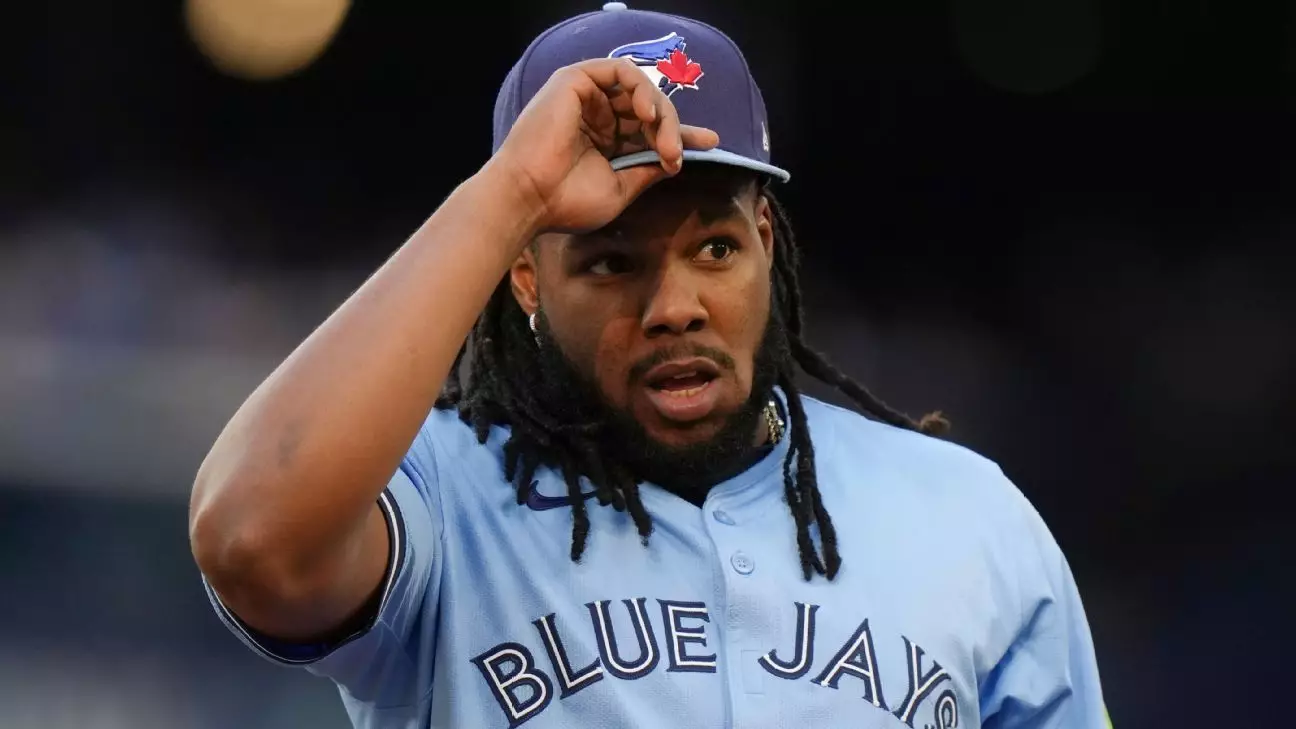Baseball has long been known not only for its thrilling competitions on the field but also for the intricate financial maneuvers off it. The recent salary arbitration period has revealed a lot about how teams value their players and the mechanics of contract negotiations. The agreements reached by players such as Vladimir Guerrero Jr. and Framber Valdez underscore both the changing dynamics in player compensation and the sometimes contentious nature of negotiations between athletes and management.
Salary arbitration serves as a critical mechanism in Major League Baseball (MLB), allowing players who have acquired enough service time to challenge their teams’ valuations of their worth. This process is particularly significant for younger athletes, who may still be in their initial years of professional play, as it can substantially affect their earnings trajectory. Take, for instance, Guerrero Jr., who recently negotiated a one-year contract worth $28.5 million after previously setting a record with an arbitration win that granted him $19.9 million. These figures illustrate an upward trend that reflects both the player’s performance prowess and the increasing financial capabilities of franchises.
It is fascinating to note the collective benefits that arise from such negotiations. Players like Guerrero and Valdez not only secure compensation that reflects their value but also set precedents that can influence negotiations for their peers. Other athletes, such as Tarik Skubal, who recently accepted an impressive deal for $10.15 million before even becoming a free agent, benefit from the bar set by their predecessors. As more players register significant salary increases through arbitration, those who follow gain leverage in their negotiations, fostering a competitive landscape for salaries.
From the stance of MLB franchises, navigating salary arbitration presents challenges and strategies. While teams want to control payroll, they also recognize the necessity of rewarding star players sufficiently to maintain competitiveness on the field. The recent transactions by the Toronto Blue Jays exemplify this duality. Alongside Guerrero Jr., contracts were reached with outfielder Daulton Varsho and catcher Alejandro Kirk, suggesting a willingness from the organization to invest in its talent pool strategically.
The Houston Astros’ decisions regarding Framber Valdez and others similarly illustrate this approach. Ensuring that key players receive fair compensation not only aids in retaining talent but also cultivates a winning culture essential for team success. These strategies highlight how a thoughtful approach to contract negotiations can yield favorable results on the field, as well.
Moreover, broader implications arise from the players’ performance in arbitrations. With players boasting a record of 9-6 in arbitration hearings last season, it demonstrates that athletes are increasingly equipped to advocate for themselves effectively. Over time, this could lead to shifts in team philosophies concerning how they value talent and manage payroll.
As the landscape of baseball continues to evolve, it remains imperative for stakeholders to stay ahead of trends in player compensation. The shift towards higher salaries due to successful arbitrations portends that players will continue to acquire greater leverage in negotiations. Additionally, as the pool of arbitration-eligible players dips, clubs will need to adapt their strategies accordingly.
The drop from 238 players eligible for arbitration at the beginning of the month to 169 reflects the impact of contracts and player movements across the league. Teams must also pay close attention to the implications of their arbitration decisions, as past cases—like those of J.D. Davis and Phil Bickford—underscore that not every negotiation ends favorably for the team.
Ultimately, as teams and players navigate this complex terrain, the outcome of these negotiations will likely shape the landscape of MLB for years to come. Negotiations in the realm of salary arbitration will continue to reflect not only the players’ worth but the evolving nature of the league itself, highlighting the necessity for adaptability and strategic foresight.
In wrapping up, it is clear that while the immediate focus may be on individual contracts and valuations, the repercussions of these negotiations echo throughout the MLB, shaping the future of the sport in profound ways.

